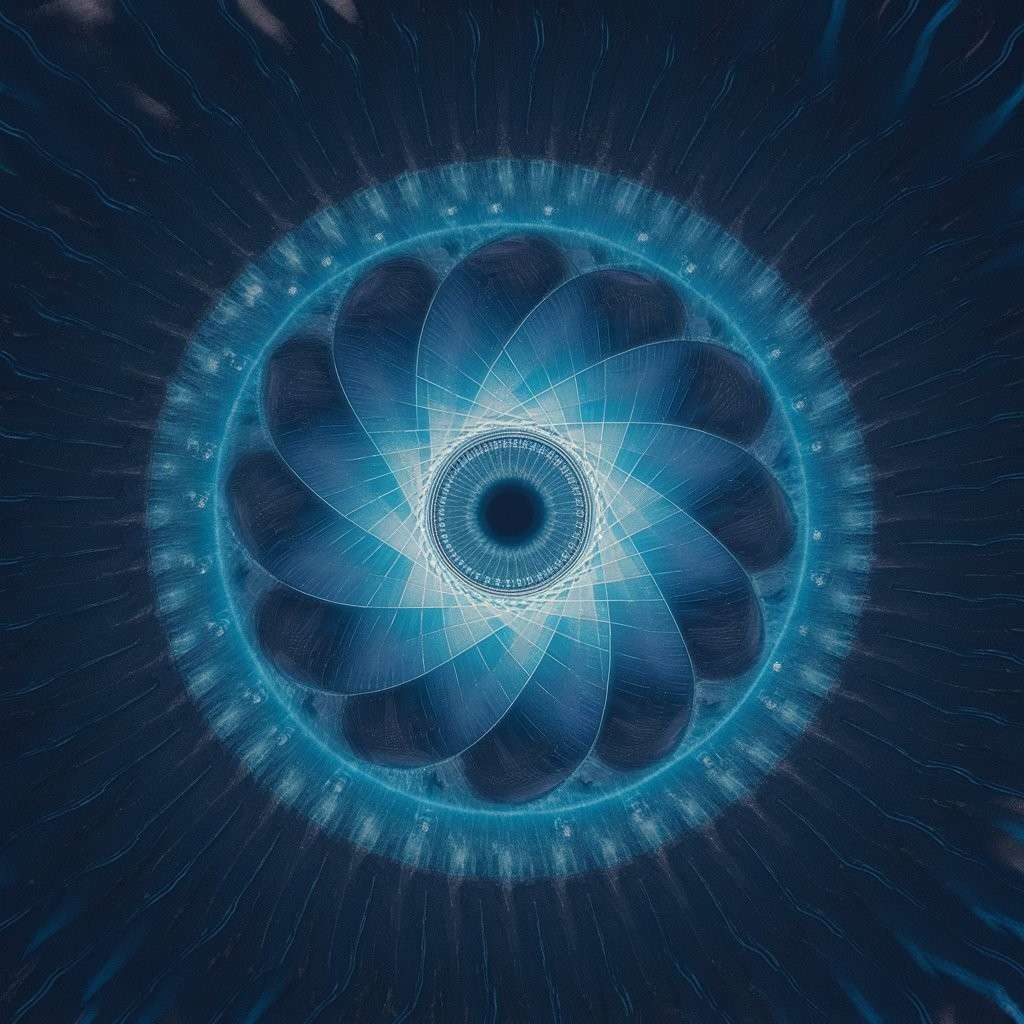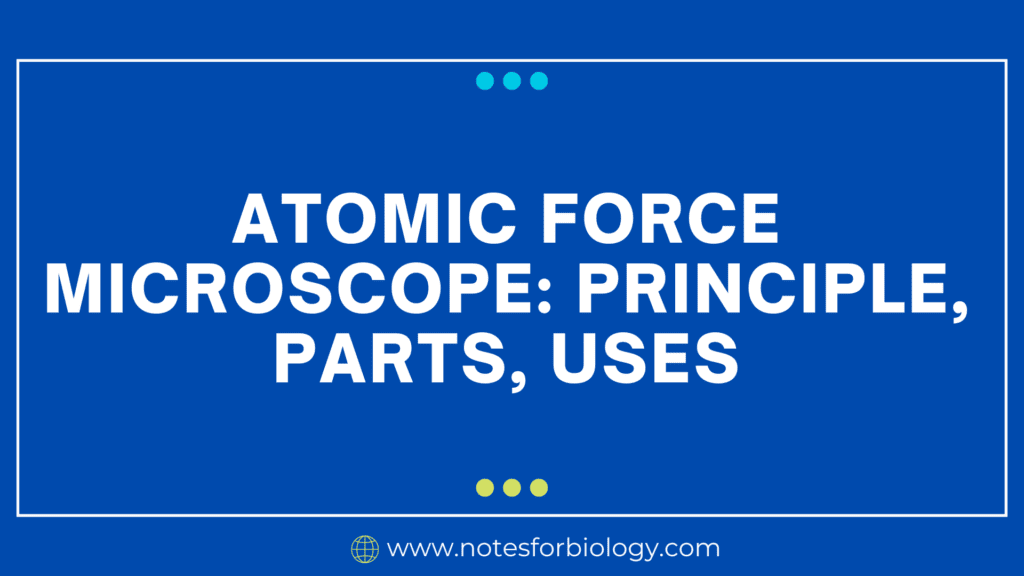Definition Atomic Force Microscope
The Atomic Force Microscope measures the forces that come from scanning a sample surface with a sharp tip to determine what causes cantilever deflections. A laser-photodetector system detects these deflections, and the information is utilized to produce high-resolution topographical pictures of the specimen. Constant force engagement is ensured by the feedback loop mechanism, allowing for accurate and exact imaging. The AFM can operate in three different modes: contact, tapping, and non-contact. This versatility enables it to be used on a variety of surfaces and materials.

Table of Contents
Principle of Atomic Force Microscope
The basic working concept of an atomic force microscope (AFM) is the measurement of forces between the surface of a sample and the sharp tip of the probe. The forces between the tip and the sample cause the cantilever to deflect as it scans over the surface. A nanometer-scale topographical map of the surface is produced by measuring these deflections. Van der Waals forces, electrostatic forces, and mechanical contact forces are the main forces at play.
Working Principle
1. Force Interactions
Van der Waals forces, electrostatic forces, and mechanical contact forces between the tip and the sample surface are all measured by the AFM.
2. Deflection Detection
The cantilever deflects as the tip moves over the surface due to the contact forces. The force acting on the sample from the tip determines how much of a deflection there is.
3. Laser Deflection Method
The cantilever’s back is the target of a laser beam. The angle of the reflected laser beam varies when the cantilever deflects as a result of the contact forces.
The photodetector receives the reflected laser beam, and the cantilever’s deflection modifies the laser spot’s location on the detector.
4. Feedback Loop
A feedback mechanism receives the deflection signal from the photodetector.
To keep a consistent force interaction, the feedback system modifies the cantilever’s height. Typically, to do this, the sample or cantilever is shifted in the z-direction by moving the piezoelectric scanner.
5. Image Construction
The modifications made by the feedback system are noted and utilized to create an intricate map of the sample surface. The deflection data are combined to create a topographical picture of the sample at the nanoscale as the tip moves in a raster pattern over the surface.
Parts of Atomic Force Microscope
1. Cantilever
a flexible silicon- or silicon-nitride-based beam with a sharp point at the end. Because of its flexibility, the cantilever may react to even the smallest pressures that exist between the sample and the tip.
2. Tip
The very pointed tip, which is attached to the cantilever’s end, frequently ends in a single atom. Its clarity makes high-resolution images possible.
3. Laser and Photodetector
The rear of the cantilever is the focus of a laser beam. The laser beam bounces off the cantilever as it deflects, landing on a position-sensitive photodetector. Cantilever deflections are correlated with changes in the laser’s location on the detector.
4. Piezoelectric Scanner
This part accurately and precisely moves the sample in three dimensions (x, y, and z). It guarantees that the sample surface can be thoroughly scanned by the tip.
5. Control System
The scanning procedure is overseen by the control electronics, which also keep the force of engagement between the tip and the sample constant. Feedback loops are frequently used into this system to modify the tip’s height and maintain a steady force.
6. Data Acquisition System
The photodetector provides data to this system, which then analyzes it to provide pictures and other analytical data.
Uses of Atomic Force Microscope
1. Surface Topography
The main use of AFM is to acquire high-resolution topographical pictures of surfaces. It is very useful in materials research because it can map the surface structure of materials at the atomic or molecular level.
2. Material Properties
By examining the force interactions that occur during tip-sample contact, AFM is able to quantify a variety of material characteristics, including elasticity, adhesion, and hardness.
3. Biological Samples
AFM is used in biology to photograph biological molecules in their natural settings, including proteins, DNA, and cell membranes. Without labeling, it facilitates the study of molecular structures and interactions.
4. Nanomanipulation
AFM is important in nanotechnology for creating and changing nanostructures because it can manipulate things that are nanoscale by applying controlled forces.
5. Electrochemical Applications
In electrochemistry, AFM is used to investigate thin film characteristics and electrode surface responses.
6. Thin Film Analysis
Thin film thickness, homogeneity, and surface roughness may all be analyzed by AFM, which is vital for the semiconductor production process.
7. Polymers and Composites
AFM is used in polymer science to comprehend the phase separation and morphology of blends and composites of polymers.
8. Quality Control
AFM is used by industries for quality control in order to find flaws and guarantee that nanostructured materials and gadgets are consistent.
Frequently Asked Question
1. What is an atomic force microscope used for?
The atomic force microscope (AFM) has been utilized extensively in biological sciences and materials research, but its application in vision science has been rather restricted. The topography of soft biological materials in their natural settings may be imaged using the AFM.
2. What does atomic force microscopy test for?
Another name for AFM is scanning probe microscopy. Sample surface roughness may be measured by Atomic Force Microscopy down to the angstrom scale. AFM analysis can offer quantitative measures of feature sizes, including step heights and other dimensions, in addition to surface images.
What is the principle of an atomic force microscope?
AFM microscopes work on the basis of surface sensing with a micromachined silicon probe that has an incredibly fine tip. The process of imaging a sample with this tip involves raster scanning across the surface line by line, albeit there are significant differences between the various operating modes.
Related Article

